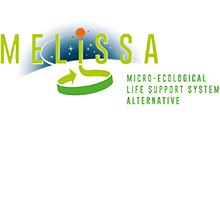Staff
Valentin Faust


Dr. Valentin Faust
About Me
I am an ETH environmental engineer and former PhD student in the Process Engineering department of Eawag under the supervision of Prof. Kai Udert. In my PhD project, I focused on optimizing nutrient recovery from urine for Space Missions. I am interested in modelling, decentralized waste water treatment, source separation, nutrient recovery and closed-loop systems.
[[ element.title ]]
Projects
[[ element.title ]]
Curriculum Vitae
| [[ entry.date || 'empty' ]] |
[[ element.title ]]
Publications
[[item.title]]
Faust, V.; Gruber, W.; Ganigué, R.; Vlaeminck, S. E.; Udert, K. M. (2022) Nitrous oxide emissions and carbon footprint of decentralized urine fertilizer production by nitrification and distillation, ACS ES&T Engineering, 2(9), 1745-1755, doi:10.1021/acsestengg.2c00082, Institutional Repository
Faust, V.; van Alen, T. A.; Op den Camp, H. J. M.; Vlaeminck, S. E.; Ganigué, R.; Boon, N.; Udert, K. M. (2022) Ammonia oxidation by novel "Candidatus Nitrosacidococcus urinae" is sensitive to process disturbances at low pH and to iron limitation at neutral pH, Water Research X, 17, 100157 (11 pp.), doi:10.1016/j.wroa.2022.100157, Institutional Repository
Faust, V.; Vlaeminck, S. E.; Ganigué, R.; Udert, K. M. (2024) Influence of pH on urine nitrification: community shifts of ammonia-oxidizing bacteria and inhibition of nitrite-oxidizing bacteria, ACS ES&T Engineering, 4(2), 342-353, doi:10.1021/acsestengg.3c00320, Institutional Repository
Faust, V.; Boon, N.; Ganigué, R.; Vlaeminck, S. E.; Udert, K. M. (2023) Optimizing control strategies for urine nitrification: narrow pH control band enhances process stability and reduces nitrous oxide emissions, Frontiers in Environmental Science, 11, 1275152 (14 pp.), doi:10.3389/fenvs.2023.1275152, Institutional Repository
Faust, V. (2023) Effects of pH on urine nitrification: from microbial selection to process performance, 250 p, doi:10.3929/ethz-b-000648527, Institutional Repository
[[ element.title ]]
[[ element.title ]]
This member of staff no longer works at Eawag. Please contact info@eawag.ch for further information.
[[ element.title ]]
[[ element.title ]]
[[ element.title ]]
Research Group
[[ element.title ]]
Focalpoints
- Decentralized wastewater treatment and source separation
- Nutrient recovery
- Closed-loop system
- Modelling
- Optimization and process control

